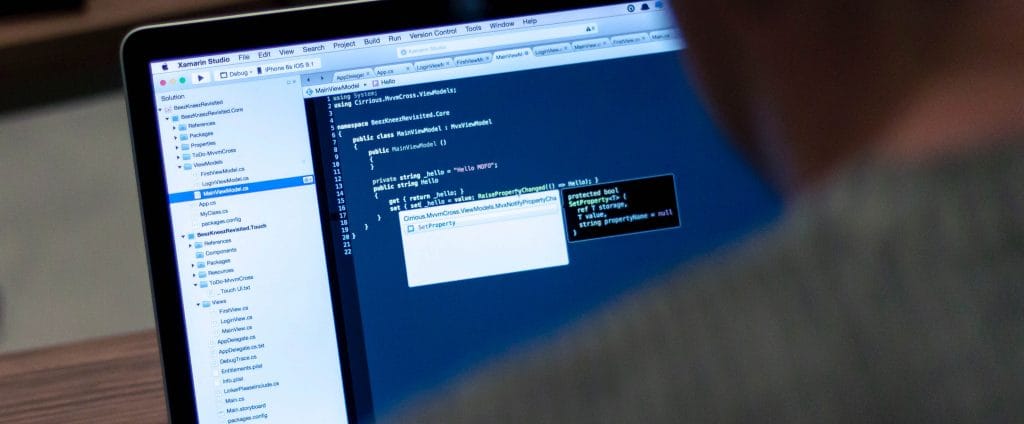THE IMPORTANCE OF CRITICAL INFRASTRUCTURE SECURITY IN THE ENERGY SECTOR
June 10, 2022
Introduction
The energy industry includes businesses that are involved in the production, extraction, processing, or distribution of fuels such as coal, oil, and gas. Manufacturing plants rely heavily on networking to control the equipment through the Internet via IoT and send data in seconds. Although the numerous advantages of digitalization benefit energy suppliers, as part of a country’s critical it infrastructure services, even minor security breaches may be fatal. Company-wide email interactions are one of the most regularly utilized gateways for cyber-attacks. We thus need a comprehensive strategy that incorporates communicational, organizational, and procedural frameworks that may greatly decrease cyber-related risks in the energy sector.
In the utility sector, there are three features that make the industry particularly vulnerable to modern cyber-attacks. The first is a surge in the number of threats and actors targeting utilities: nation-state actors aiming to disrupt security and economic stability, cybercriminals who realize the economic value offered by this sector, and hacktivists seeking to publicly voice their opposition to utilities’ initiatives or larger goals. The second risk is utilities’ growing attack surface, which stems from their geographical and administrative complexity, as well as the decentralized style of many organizations’ cybersecurity leadership. Finally, the electric power and gas sectors’ unique interdependence between physical and cyber infrastructure makes firms vulnerable to exploitation, including billing fraud using wireless “smart meters,” commandeering of operational-technology (OT) systems to halt numerous wind turbines, and even physical devastation.
Why is the industry vulnerable?

Data theft, billing fraud, and ransomware are just a few of the cyber risks that electric and gas providers are encountering. However, several characteristics of the energy sector heighten the risk and impact of cyberthreats against utilities, such as :
- The threat environment for utilities has grown to include a wider range of threats from a wider range of players. Nation-state actors and other skilled actors have shown a greater readiness to target it infrastructure solutions as part of larger campaigns.
- To generate profits, cybercriminals attack utilities and other vital infrastructure providers. In May 2019, a ransomware assault crippled Baltimore city-systems for weeks, costing an estimated $18.2 million in damages—far more than the required ransom. Such attacks are no longer restricted to IT networks; a government agency recently warned that ransomware had been used to impair a gas company’s view into pipeline operations, resulting in a loss of productivity and income until the ransomware was eradicated.
- Finally, hacktivists may represent less advanced threats, but they are certainly competent at interrupting power and gas distribution networks. A denial of service (DoS) attack, which shuts down a system to restrict consumer access, is one example of hacktivism.
The consequences of these attacks, if not appropriately mitigated, can be as severe as the consequences of cybercrime. Hacktivists have also taken personal information from climate leaders. Such information may be used to launch cyberattacks on specific sector leaders.
While most utilities are aware of the threats posed by cybersecurity, there are still variances in their capacity to acquire financing to invest in OT and IT cybersecurity measures. Many jurisdictions lack the specialized staff required to examine cybersecurity programmed costs, which are factored into a utility’s consumer billing rates. At best, this results in a good-faith approach to allowing incremental investments in cyber capabilities, and at worst, regulators’ suspicion of greater rate hikes associated with strategic security overhauls. In addition, some municipalities provide energy services that are not provided by a large utility. This may assuage customers’ concerns about current energy companies in the market, but many of these towns are still unprepared or understaffed to oversee the adoption of adequate cybersecurity safeguards to reduce risk.
To address these issues, we offer a three-pronged strategy based on our expertise in working with more cyber-aware businesses (e.g., banking, national security) and our on-the-ground worldwide experience with utilities at varying degrees of technical sophistication, which comprises of:
- Gather strategic intelligence on risks and actors before network assaults: Companies must move beyond reactive security measures and embrace a proactive security approach that involves the security department in key decisions about the company’s growth and the consequent increase in it infrastructure consulting and geographic complexity. Leaders must develop security-minded policies to counteract “known unknowns” as attackers continue to uncover and employ new attack channels.
- Programs aimed at closing geographic and operational gaps in awareness and communication, as well as fostering a security culture: A well-functioning utility security apparatus should be coordinated to guarantee that the finest brains throughout the organization—not just in security—are aware of risks and have solid protocols in place to report possible vulnerabilities and emergent events. Technical platforms should also offer security with a unified operational image of sites across geographies and business divisions so that coordinated attack and reconnaissance campaigns may be detected.
- Industry-wide collaboration to address the increasing convergence of physical and virtual threats: As the eyes on the ground for cutting-edge technology (and accompanying vulnerabilities), industry partnerships should participate in regular communication about how to safeguard the delicate linkages between physical and virtual infrastructure, as well as IT and OT networks.
Conclusion
As we’ve read, we need to implement more strategic measures, such as continuously monitoring the systems and implementing intrusion detection systems in case of intruders, so that based on these alerts, a security operations center (SOC) analyst or incident responder can examine the issue and take the necessary actions to mitigate the risk, because simply implementing a firewall is insufficient to prevent all intruders and threat actors from entering the facilities. The critical infrastructure sector must always use network segmentation, which is an architectural approach that divides a network into multiple segments, allowing network administrators to control the flow of traffic based on defined admin policy initiatives. Without network segmentation, bad actors can run rampant inside an organization’s network infrastructure and gain access to valuable assets such as employee access, applications, and systems as well as highly confidential information. DDoS assaults, as previously noted, must be avoided since they will jeopardize your organization’s Public Cloud Infrastructure and disrupt the availability of organizations that operate Critical Infrastructure in the cloud. It is advised that organizations deploy Content Delivery Networks (CDN) and Web Application Firewalls (WAF), share critical resources with administrators, and conduct frequent security audits to discover weaknesses. Anti-malware protection, host-based firewall limitations, and patch-management policies should all be enforced in vulnerable OT systems. Establishing a Critical Infrastructure Protection strategy in place, which includes all of the procedures listed above, will assist companies in preparing for and preventing major events impacting the Critical Infrastructure environment. To defend against an ever-increasing number of threats, security specialists must periodically re-examine the integrity of these Critical Infrastructure systems, ensuring that they can withstand new threats and assaults.
In conclusion, cyber and physical risks to electric power and gas security are not insurmountable. We need to include a strategic threat intelligence plan, which requires utilities to adopt a proactive, preventive approach to the diverse and complex threat landscape that their businesses and networks face. Analytic teams that can provide a holistic as well as an assertive view of the risks by monitoring threats across the industry and region, including intelligence about technical vulnerabilities and the various factors (e.g geopolitical, economic, legal) that shape the threat environment, should always be considered by organizations. With this approach, we can easily defend the energy and critical IT Infrastructure Outsourcing sectors against cyberattacks.
Keep reading about
LEAVE A COMMENT
We really appreciate your interest in our ideas. Feel free to share anything that comes to your mind.
Our 16 years of achievements includes:
-
10M+
lines of codes
-
2400+
projects completed
-
900+
satisfied clients
-
16+
countries served




